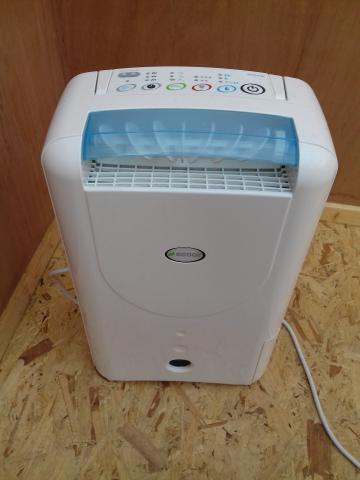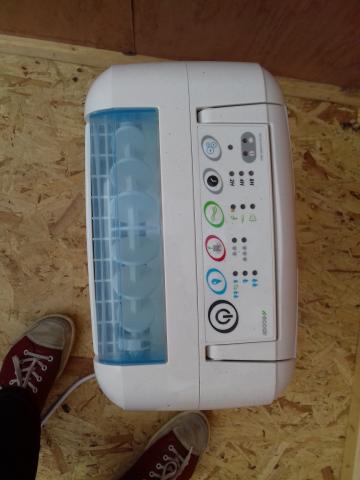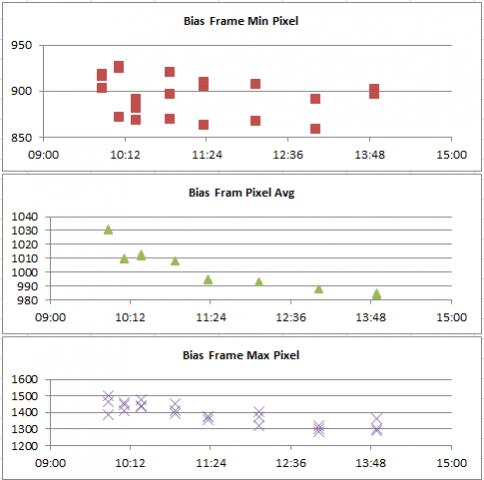Forum Replies Created
-
AuthorPosts
-
 Andy WilsonKeymaster
Andy WilsonKeymasterJust to note that BASS stands for Basic Astronomical Spectroscopy Software, written by John Paraskeva, and though it started out ‘basic’ it is now much more advanced. You might get some responses, but I think John setup that Yahoo group for his BASS software rather than VSpec. If you don’t get a response from the BASS group then one of the more general spectroscopy groups might be better like Ken Harrison’s Astronomical Specotroscopy group.
https://groups.yahoo.com/neo/groups/astronomical_spectroscopy/info
Though I’ve used VSpec, I am not very familiar with it. It is very versatile and powerful, but I found it would crash on me without warning and I’d loose my work.
Cheers,
Andy
 Andy WilsonKeymaster
Andy WilsonKeymasterHi Jack,
I’ve seen both of what you describe.
I found that depending of the angle of the spectrograph due to gravity, then there can be small wavelength shifts. Nothing to cause a serious problem during normal observing, though on a run lasting over an hour might then the overall resolution could be slightly reduced. The tests I did were about 3 years ago and I’m not sure I’ve still got a copy. With the spectrograph off the telescope I took neon calibration images with the spectrograph on each side and vertical, to observe the most extreme effects. I then made careful measurements of the centres of the neon lines at the same position on each image.
It might be worth making sure all the screws in the body of the LHIRES III are tight, but I think small shifts are to be expected. There is more than one moving part and heavy cameras attached. Only a minute flexure will cause a small shift in wavelength. That is one reason why fibre fed spectrographs can be more stable, though using optical fibres introduces a different set of problems.
I also see shifts in focus with temperature. So on a cold night if I start with the neon lines in perfect focus then often they won’t be in perfect focus at the end of the run. This is again something I live with. The flat fields will be slightly compromised, but if I refocus then that would also compromise the flat fields. Of course as long as you retake the flats after each refocus then that is not a problem. This is the same behaviour as needing to refocus a telescope due to thermal contraction from falling temperatures.
Best wishes,
Andy
 Andy WilsonKeymaster
Andy WilsonKeymasterHi Peter,
As Robin has pointed out, there may be a very easy fix to the ripples, which is simply to orient things such that the spectrum falls along the camera chip length ways.
Cheers,
Andy
 Andy WilsonKeymaster
Andy WilsonKeymasterHi Peter,
It looks like you are off to a good start. The hydrogen Balmer lines are clearly visible so everything must be working. I note there is a bit of a wiggle in the spectrum from about 5300 to 5900 Angstroms. From the regularity in the spacing I wonder if this might be an interference effect that I have heard of with some cameras. There could be a hint of it at other wavelengths too.
Cheers,
Andy
 Andy WilsonKeymaster
Andy WilsonKeymasterHi Dave,
I can give some insight into the variable star observations and spectra, as I manage those BAA databases.
BAA Variable Star Section Database: http://britastro.org/vssdb/
BAA Spectroscopy Database: http://britastro.org/specdb/
It used to be that amateurs and professionals would request this type of data by contacting the Section Director, and this still sometimes happens. However, it is now far more common for them to simply download the observations from the website. We have notes on the database websites asking researchers to acknowledge the use of the data.
We also send a copy of all our variable star observations to the AAVSO once per quarter. While researchers will often come to the BAA databases, some researchers may only look at the AAVSO website, in which case sharing our observations makes them more widely available and useful. The AAVSO acts as a bit of a central hub for variable star observations, receiving observations from a number of global organisations. The AAVSO acknowledge the individual organisations as well as the observer in the data. It is important to note that the AAVSO database does not store all of the information that is held by the BAA Variable Star Section database. In particular we additionally record the chart and comparison stars, so that light curves can be updated when more reliable comparison star magnitudes become available. Something which has happened many times over the decades, and otherwise causes unreal bumps and dips in the light curves.
The BAA Spectroscopy Database is relatively speaking quite new, though I already see it referred to amongst the spectroscopy community. With time it will become better known, as observers refer to it in their communications, and interested researchers are pointed to it. There has been an example of this in the past month with a Pro/Am project looking for a place to archive historic spectra, so they can be made available to researchers for download.
There are also a good number of dedicated campaigns to observe particular targets. Though I primarily make variable star and spectroscopy observations, I see these going on for solar system targets as well. Those involved in these campaigns will usually have an understanding of how their data is being used.
Best wishes,
Andy
17 February 2018 at 12:34 pm in reply to: First Spectroscope finished… (well, mechanically). #579129 Andy WilsonKeymaster
Andy WilsonKeymasterHi Tony,
That is a nice looking spectrograph, and at least being orange you are less likely to bump your head on it in the dark. It sounds like things are progressing well and I’ll be interested to see the results once it is operational.
Best wishes,
Andy
 Andy WilsonKeymaster
Andy WilsonKeymasterHi again Jeremy,
The BAA does hold meetings in Wales, but I don’t think there are any coming up in the near future. Anyone please correct me if I have missed any! I am not sure they are particularly frequent but I’ve been to at least 3 meetings in Cardiff.
Not in Wales, but just across the Bristol Channel is a Back to Basics Workshop at Bristol on 10th March.
https://britastro.org/Bristol2018
Best wishes,
Andy
 Andy WilsonKeymaster
Andy WilsonKeymasterWelcome to the BAA Jeremy!
The Sky-Watcher ESPRIT are good scopes so there is plenty of interesting observing available to you. Though I am sure you are aware of that from your prior time in the hobby. Joining Observing Sections is a great way to become involved and meet fellow enthusiasts. That is certainly the area that I find most rewarding.
Best wishes,
Andy
 Andy WilsonKeymaster
Andy WilsonKeymasterHi Tim,
Thanks for the suggestion. The Website Operations Team will take a look at the feasibility, so I won’t say a yes or no at this stage. I can see the benefits.
Best wishes,
Andy
 Andy WilsonKeymaster
Andy WilsonKeymasterHi Jack,
I use an ecoair DD122 Classic Mk5. I got it a few years ago from an online retailer but I cannot remember who. As Peter says it is import to get desiccant based dehumidifier so it will work in cold temperatures. Here are a couple of pictures.


I also run a 60W tube heater near my computer to avoid condensation causing problems with it.
Best wishes,
Andy
 Andy WilsonKeymaster
Andy WilsonKeymasterHi Nick,
I have a dehumidifier that I run in my observatory for a couple of hours after each observing session. I find this does a good job of removing the moisture that builds up on surfaces in the observatory. Important to note that you would need a low temperature dehumidifier as there are some which only work at room temperature.
Andy
 Andy WilsonKeymaster
Andy WilsonKeymasterThat is a nice spectrum of Alioth on your member page, showing the hydrogen absorption lines.
Stacking is useful for fainter targets to increase the signal. However, you need good tracking for it to work well with a star analyser, to avoid any drift of the star. If there is even a slight drift then this can blur the spectrum, which might be what you were seeing. One way to reduce the problem is to align the wavelength axis of the spectrum North South, on the assumption that any drift will be East West. This could even help by spreading the spectrum over a few pixels, but requires that you have no drift in the North South direction.
Sharpening should normally be avoided. The algorithms can introduce artefacts and change the line profiles. I have heard of it occasionally being used to bring out faint lines, but it is very risky and will invalidate most of the scientific data contained within the spectrum.
Cheers
Andy
 Andy WilsonKeymaster
Andy WilsonKeymasterHi Jack,
I’m not sure of the make of my flip mirror as I bought it a few years ago and it is a generic one without a company logo.
There won’t be any side to side adjustments with flip mirrors, or up and down for that matter. They are designed so the light either goes straight through or is diverted up at a right angle. If you are using this in a finder setup then you would normally mount it within finder rings with screws to hold and adjust the finder scope position.
Flip mirrors aren’t usually used in finders. Instead you use them in the light path of your main scope so you can view with an eyepiece or another camera without have to detach your main equipment. Nothing wrong with using them in a finder, but there may not be any benefit to doing so.
Best wishes,
Andy
 Andy WilsonKeymaster
Andy WilsonKeymasterHi David,
You have already received some great advice for getting started with the links posted by Andrew and Robin. I started out by reading books on the subject, but there is no one book that I would recommend as the best starting point. I can always recommend a few, but you may be able to get all you need from the internet to get going without having to spend money on books.
Starting off with a nice easy target like Vega is definitely the right way to go. I found it took me a few months to learn how to use my setup and get comfortable with the processing, but I was still able to get some pleasing results right from the start. The star analyser is an excellent way to learn. As well as being simple it will also allow you to go fainter than with higher resolution spectrographs, so there are a whole range of targets you can observe.
Good luck and please keep us posted on how you get on.
Andy
 Andy WilsonKeymaster
Andy WilsonKeymasterHi Alun,
Sounds great. It would be very nice to have it fully remotely controllable. Good luck with your modifications.
Andy
 Andy WilsonKeymaster
Andy WilsonKeymasterHi Andrew,
Thanks for posting your results. You have the same camera as me, so it is interesting to see your results.
It is a while since I ran my test, and I don’t think I removed the hot pixels, so it is possible they are the cause of what I saw. I really wanted to measure the median pixel value, but the software I was using did not calculate that statistic. So I measured the max, min and average pixel values. Leaving the camera be, and then running a series of bias and dark frames. I must redo it sometime, this time removing the hot pixels.
Here are my results for reference.
Test Run 1

Test Run 2

Cheers,
Andy
 Andy WilsonKeymaster
Andy WilsonKeymasterThat is an interesting test Andrew, a great demonstration of just how small the dark current is with these modern CCDs. Can you remind me which camera you use?
Also, have you also looked to see if there is any bias drift? That is the one thing that surprised and horrified me when I ran some tests on my camera last year.
Cheers,
Andy
 Andy WilsonKeymaster
Andy WilsonKeymasterHi Alun,
That is a nice bit of remote control for your neon and flat field lamps. I did give it a bit of consideration, but found I don’t really need it at present. I am at the telescope when I change target, and everything is sufficiently solid that nothing moves when I flick the switches on the spectrograph. This would be great for remote observing!
Andy
 Andy WilsonKeymaster
Andy WilsonKeymasterHi Denis,
Here is a summary of the results for the successful candidates in 2017.
President: Callum Potter 290
Treasurer: Geoff King 285
Business Secretary: Bill Tarver 280
Papers Secretary: Jeremy Shears 285
Meetings Secretary: Hazel Collett 283
Trustees:
- A Lorrain 228
- D Arditti 209
- J McClean 184
- R McKim 182
- J Chuter 159
Council:
- P Bosley 135
- S Bosley 119
- P Abel 230
- P Carson 162
- R Sargent 158
Total Votes Counted: 320
Null/Void votes:13
Votes not Counted as not renewed or not members: 29
Best wishes,
Andy
 Andy WilsonKeymaster
Andy WilsonKeymasterHi Denis,
The results will appear in the report of the AGM in the February Journal. I am seeing if I can get hold of a copy to add to this forum thread.
Thanks for pointing out the ‘Who’s who’ Peter.
Best wishes,
Andy
-
AuthorPosts
